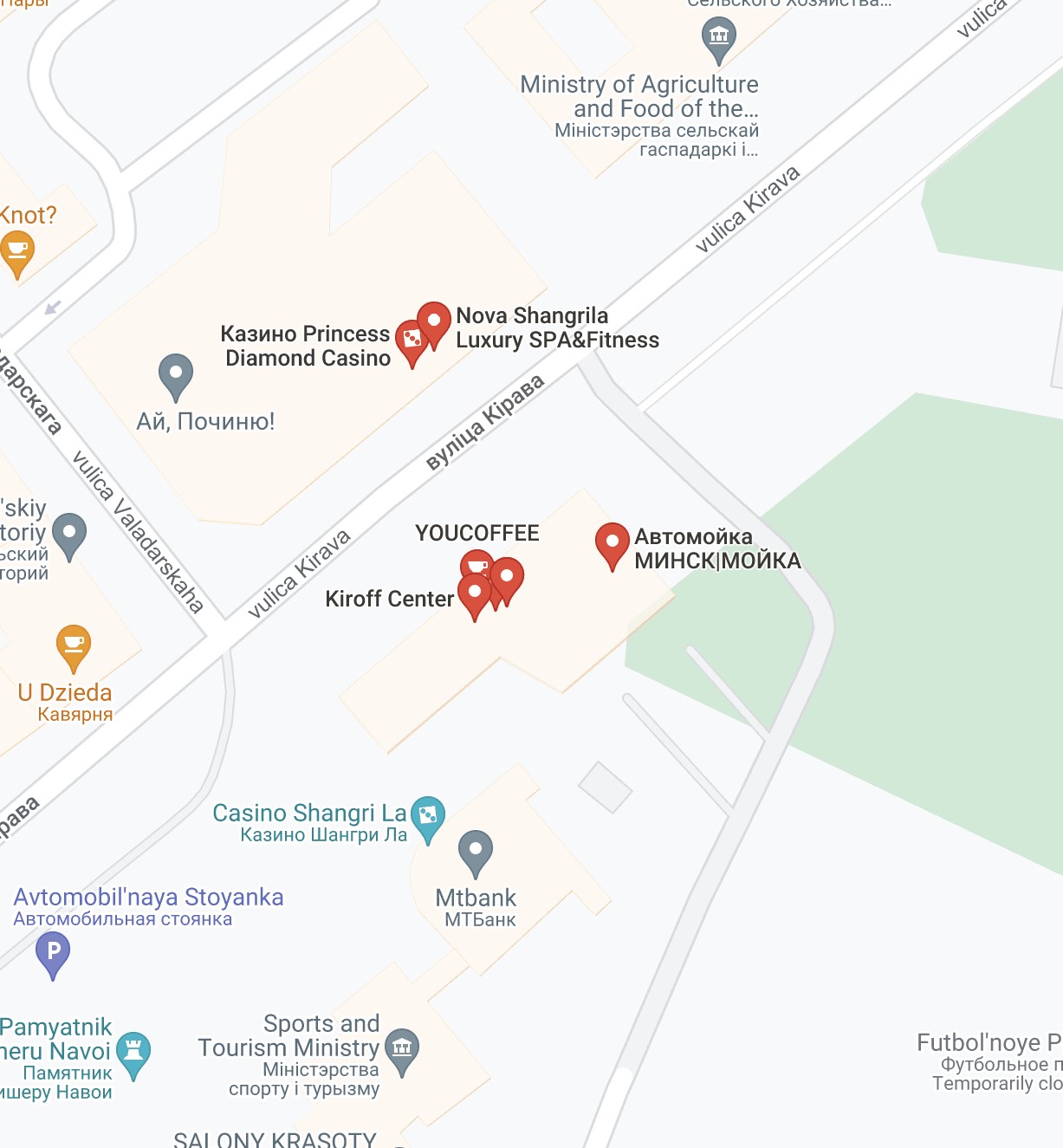Rules for Constructive Feedback in the Workplace
Constructive feedback is an essential element of a healthy and productive workplace. It helps employees grow, enhances communication, and improves overall job satisfaction. When delivered effectively, feedback can drive performance and engagement, fostering a culture of trust and collaboration. However, not all feedback is beneficial — poorly delivered criticism can demotivate employees and lead to resentment. Learning how to give someone feedback is crucial to ensuring that it is received positively and leads to meaningful improvement.
Understanding how to provide constructive feedback involves focusing on specific behaviors, using a balanced approach, and offering actionable suggestions. Effective feedback should be clear, objective, and delivered in a supportive manner to encourage professional development. This article explores the importance of constructive feedback, its benefits, key rules for delivering it, strategies to ensure its effectiveness, and practical examples of feedback scenarios to help individuals master the art of giving and receiving feedback in the workplace.
Why Does Constructive Feedback Matter?
What is constructive feedback? It is a form of communication that provides employees with clear, actionable insights into their performance. Constructive feedback meaning revolves around helping employees improve while maintaining their motivation and engagement. Understanding how to give constructive feedback is essential for leaders and colleagues to foster growth and collaboration. It involves delivering observations in a supportive manner, focusing on solutions rather than just pointing out mistakes.
Constructive criticism should be specific, balanced, and geared toward professional development rather than personal judgment. Providing timely and well-structured feedback fosters a positive work environment where employees feel valued and heard. It also aids in conflict resolution, reducing misunderstandings and improving team dynamics. Without constructive feedback for employees, they may struggle to understand their role expectations, leading to disengagement and inefficiency. By learning the right techniques for delivering feedback, organizations can enhance productivity and strengthen workplace relationships.

The Benefits of Constructive Feedback at Work
Improved Performance
One of the most significant benefits of constructive feedback is its impact on employee performance. Regular feedback allows employees to make necessary adjustments, learn from their mistakes, and enhance their skills. When feedback is clear and actionable, employees can implement changes that lead to higher productivity and efficiency. Knowing how to give constructive feedback ensures that employees receive guidance that is specific and beneficial rather than vague or discouraging. Managers who provide consistent and meaningful feedback create an environment where continuous improvement becomes a natural part of workplace culture.
Employee Engagement
Giving and receiving feedback plays a key role in increasing employee engagement. When employees receive recognition for their achievements and guidance on improvement areas, they feel valued and motivated. Engaged employees are more likely to contribute proactively and demonstrate commitment to their work. Constructive feedback also helps employees develop a sense of ownership over their responsibilities, leading to a greater investment in the company’s success. Furthermore, when feedback is delivered with empathy and encouragement, employees are more open to learning and adapting.
Quicker Growth
The benefits of constructive criticism extend to professional development by identifying skills gaps and areas for improvement. Employees who receive regular feedback can progress faster in their careers, gaining the confidence and expertise needed to take on greater responsibilities. Learning how to give someone feedback in a way that is supportive rather than discouraging can accelerate professional growth by providing employees with actionable insights. Instead of waiting for annual performance reviews, organizations that prioritize continuous feedback create opportunities for employees to develop their skills in real time.
Trust
Open and honest feedback fosters a culture of trust within the workplace. When employees trust that feedback is given with positive intentions, they are more receptive and willing to improve. This trust strengthens team relationships and enhances collaboration. Managers and leaders who master how to provide constructive feedback contribute to a work environment where employees feel safe sharing their concerns and ideas. Trust also encourages employees to ask for feedback proactively, leading to continuous learning and personal development.
Conflict Resolution
The feedback process helps in addressing workplace conflicts before they escalate. Clear communication about expectations and areas of improvement reduces misunderstandings, promoting a harmonious work environment. Employees who understand the constructive feedback meaning are more likely to approach disagreements with an open mind, leading to solutions that benefit both individuals and the organization.
Rules for Giving Feedback
Be Specific
Vague feedback can be confusing and ineffective. Instead of saying, “You need to improve your communication,” specify how: “During team meetings, try summarizing key points clearly to ensure alignment.” This is especially crucial when providing feedback for colleagues or constructive feedback for managers. Being specific makes feedback more actionable and easier to implement.
Be Honest
Honesty is key when giving feedback, but it should be delivered with respect and tact. Employees appreciate transparency when it is presented constructively, helping them to trust the process. The importance of client feedback and responding constructively cannot be underestimated in professional relationships. A well-balanced approach ensures that honesty strengthens rather than damages workplace dynamics.
Listen Before Giving Feedback
Understanding the employee’s perspective before providing feedback ensures that the conversation is fair and balanced. Ask questions and encourage self-reflection before offering feedback and suggestions. This approach allows employees to feel heard and increases the likelihood of them embracing constructive criticism.
Choose the Right Time
Timing is crucial for giving effective feedback. Providing feedback in the middle of a stressful project or during a public meeting may not be well received. Select a private, calm moment to discuss performance. Well-timed feedback ensures that employees are in the right mindset to accept and act upon the suggestions provided.
Focus on Behavior
Feedback should target behaviors and actions rather than personal traits. Instead of saying, “You are not a team player,” say, “I noticed you’ve been working independently on projects that require collaboration. How can we ensure better teamwork?” This is a key principle when learning how to give constructive feedback at work. Separating actions from personality traits prevents defensiveness and encourages improvement.
Talk Face-to-Face
Whenever possible, deliver feedback in person rather than via email or messaging apps. Non-verbal cues, such as facial expressions and tone of voice, can help ensure the message is received positively. This is especially important when learning how to give employee feedback effectively. In-person conversations allow for immediate clarification and foster stronger professional relationships.
Give Recommendations
Providing actionable recommendations makes feedback more constructive. Instead of only pointing out issues, offer solutions and feedback for improvement. For example, rather than simply saying, “Your reports need more detail,” say, “Including specific data points and examples in your reports will make them more informative.” Offering practical suggestions ensures that feedback leads to positive changes and increased workplace productivity.
Strategies for Giving Effective Feedback
Implementing the right strategies can make feedback more effective, ensuring that it is well-received and leads to meaningful improvements. Here are some proven techniques:
The Feedback Sandwich
One of the most widely used techniques is the feedback sandwich approach. Start with positive feedback to highlight what the employee is doing well, followed by constructive criticism to address areas for improvement, and end on a positive note to reinforce motivation. For example, “Your presentation was engaging and well-structured. One area for improvement is making eye contact with the audience more often. Overall, your confidence and delivery were impressive.” This approach helps balance praise and critique, making feedback easier to accept.
Ask for Self-Assessment
Before providing feedback, ask employees to evaluate their own performance. Encouraging self-reflection helps them become more aware of their strengths and weaknesses. It also allows them to take ownership of their development. A question like, “How do you think that project went?” can create an open dialogue and make the feedback process feel more collaborative.
Use ‘I’ Statements
Framing feedback as personal observations rather than judgments makes it less confrontational. Instead of saying, “You never meet deadlines,” say, “I noticed that the last few projects were submitted after the deadline. Is there a challenge we can address?” This approach reduces defensiveness and fosters a problem-solving mindset.
Provide Continuous Feedback
Don’t wait for annual reviews to provide feedback. Offering regular, ongoing feedback ensures that employees can make small, manageable improvements rather than being overwhelmed with major changes all at once. Continuous feedback also fosters a culture of growth and learning within the organization.
Follow Up
Effective feedback doesn’t end after the initial conversation. Following up in future meetings ensures that employees are making progress and feel supported in their development. Checking in with questions like, “How has your progress been on the area we discussed last time?” reinforces accountability and encourages long-term improvement.
Addressing Common Workplace Challenges with Feedback
Providing feedback effectively requires addressing specific workplace challenges with clear, constructive, and solution-oriented communication. Here are some examples of how to approach different issues:
Missing a Critical Skill
When an employee lacks a necessary skill, it’s essential to address it with support and encouragement. Instead of simply pointing out the deficiency, offer a solution.
Example: “I noticed you struggle with data analysis. Would you be open to a training session to strengthen this skill?”
This approach focuses on growth and development, making it a crucial aspect of how to provide feedback to staff without discouraging them.
Deadlines
Consistently missing deadlines can affect team productivity. Feedback should focus on identifying challenges and offering solutions.
Example: “Your reports are often delayed. Can we discuss time management strategies to ensure timely submissions?”
This encourages the employee to actively participate in problem-solving, rather than feeling blamed.
Low Engagement
Employees who are disengaged may need motivation or support. Encouraging participation can boost confidence and morale.
Example: “You’ve been quiet in meetings lately. Your input is valuable — how can we encourage more participation?”
This makes feedback collaborative rather than critical, fostering a more open and engaged workplace.
Burnout
Employees working long hours may experience burnout, which affects productivity and well-being. Recognizing the issue and offering support is key.
Example: “You’ve been working late frequently. Let’s discuss ways to manage your workload and avoid burnout.”
This feedback promotes work-life balance and encourages healthier work habits.
Toxic Attitude
A negative attitude can disrupt team dynamics. Addressing it with diplomacy and solutions is essential.
Example: “I’ve noticed tension in team interactions. Let’s talk about how we can create a more positive work environment.”
This ensures constructive dialogue instead of confrontation, leading to improved team relationships.
We Are Here to Help
We specialize in finding and managing employees, ensuring teams are productive and engaged. We are competent at finding employees and administering the team, and we have a roster of employees ready to start right away. Whether you need to fill positions quickly or require long-term workforce solutions, our expertise in hiring and team administration allows businesses to scale efficiently. By streamlining the recruitment and management process, we help companies focus on growth and success without the stress of staffing challenges.
Constructive feedback is a powerful tool for improving workplace performance, engagement, and trust. By following best practices in how to give feedback, organizations can create a culture where feedback is embraced rather than feared. When delivered thoughtfully, constructive feedback enhances professional growth, resolves conflicts, and drives overall success. Implementing effective feedback strategies ensures a motivated, high-performing team, leading to better results for businesses and employees alike.
We’re Here to Help
If you contact us by the email we guarantee that you will receive a feedback from us within 2 (two) hours on any business day and within 6 (six) hours on any other day (holidays etc.).

